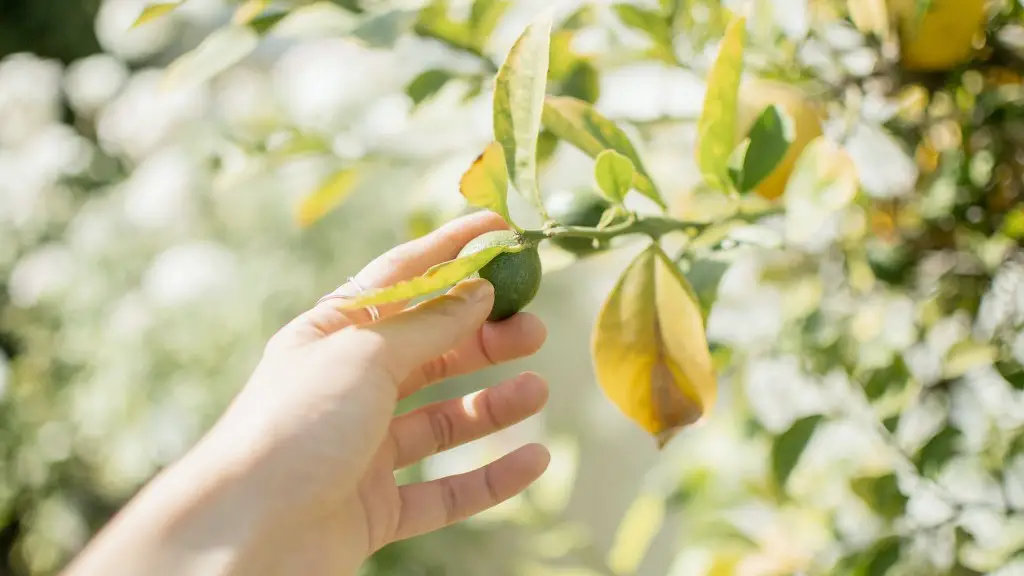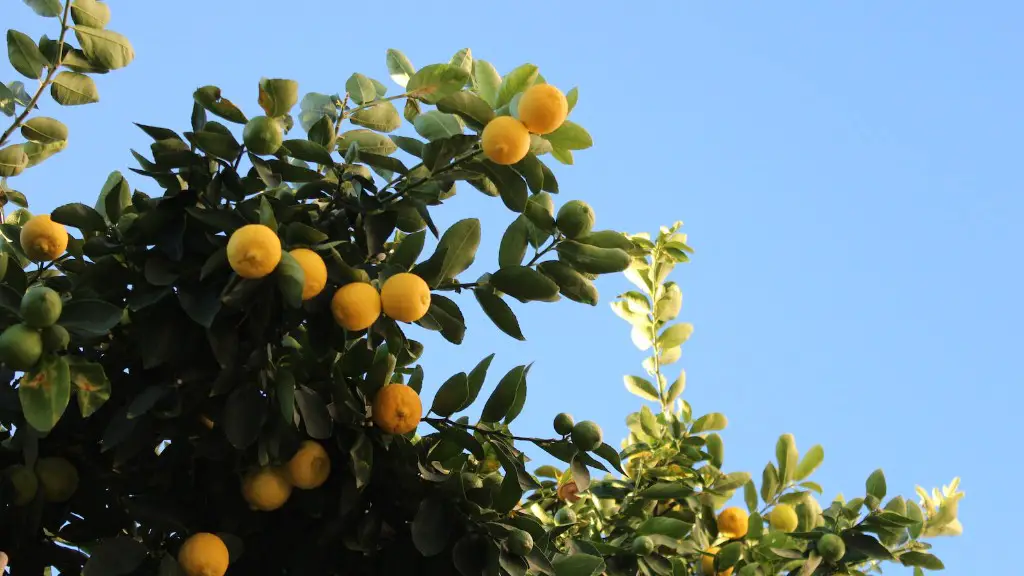Taking into consideration the right lemon tree planting location is key for successful growth. When it comes to the ideal place for a lemon tree, think about the tree’s size and its water needs. The location must give your lemon tree the best chances to thrive. Sunlight is of the utmost importance, so it’s best to pick a spot that receives maximum sunlight throughout the day. Lemon trees need at least 8 hours of sunlight a day and cannot tolerate shade. Placing your lemon tree in the ground will give it more space to grow and also allows for more precise control over the soil moisture level. But be sure to protect it from strong winds and allow for good air circulation around the soil.
Climate Conditions
Lemon trees grow best in climates with no extended periods of frost. When planting, Make sure you take into account your local climate and the lemon tree’s expected height when it is fully grown. Choose a spot in your yard that will provide the tree with enough sunlight and protection from the wind. Furthermore, pick a location that is relatively close to your home, so you can easily keep an eye on it. The tree should also be situated in a spot that can be easily accessed so that you can adequately water, prune and fertilize it.
Soil Type
The soil type matters a great deal when it comes to lemon trees. The best soil for lemon trees is one that is well-draining and fertile. Using a soil mixture made out of loam, peat and sand, with a pH level of between 5.5 and 7.0, will give your lemon tree the best chance to thrive. If the pH level of your soil is not within that range, it’s very easy to achieve the desirable acidity by adding peat and/or mulch to the soil.
Fertilization
Your lemon tree will require regular fertilization, especially during its first growing season. To promote growth and to ensure the tree gets its much-needed micronutrients, use an all-purpose fertilizer. Another important thing to keep in mind is that lemon trees are prone to iron deficiency. To avoid this, use chelated iron fertilizer twice a year alongside the regular fertilizer.
Water Needs
Lemon trees are sensitive when it comes to water. Too much moisture can cause the tree’s fruits to become brittle and turn yellow, while an insufficient amount of water can stunt its growth. When it comes to the amount of water your lemon tree needs, it all depends on the age of the tree, the amount of rainfall and the type of the soil. Refer to the instructions on your fertilizer for specific watering advice for citrus trees.
Pruning
Pruning your lemon tree is essential in order to promote healthy growth and to keep it from becoming too large. Prune your lemon tree in the late winter, after it’s gone dormant. Pruning your lemon tree will not only encourage new growth, it will also enable the tree to receive more sun which will lead to larger and heavier fruits. Be sure to use clean and sharp pruning shears and always wear protective clothing when pruning your lemon tree.
Protection Against Pests
Like all fruit trees, lemon trees are vulnerable to a range of insect attackers, diseases, fungi and other pests. Be sure to check the tree regularly for any signs of infestation or disease. Applying vigilant pest control will help the tree to stay healthy and produce delicious, juicy fruit. Spraying with insecticidal soap or horticultural oil will help to control of common pests, such as spider mites, mealy bugs, aphids, scale and whiteflies.
Harvesting
When it comes to harvesting, unripened lemons can resist on the tree for several weeks and will usually turn yellow on the edges when ready for picking. Lemons that are fully ripe will appear uniformly yellow and will be slightly softer than unripened fruits. Use a ladder and pruning shears to reach the top of the tree, if needed. Don’t try to pull fruits off of the tree, because this often causes damage and reduces the tree’s production.
Caring and Maintenance
Giving your lemon tree proper care and maintenance is key to achieving a plentiful and delicious harvest. Regularly check for pest and insect infestations and take precautions to prevent them. Prune, fertilize and water your tree regularly for optimal growth. Additionally, always remove dead and injured leaves, branches, fruits and other debris. This helps to prevent disease and keeps your lemon tree healthy and thriving.
Winter Care
Your lemon tree will need some extra care over winter to ensure it doesn’t become damaged by extended periods of frost. Lemon trees have a developing root system, so be sure to protect it over the chillier months. If you live in a colder climate, cover the soil with a thick layer of mulch to keep it warm and apply frost protection, such as horticultural fleece, to trees over 1m in height. Additionally, keep an eye on the weather forecast, remove any snow that accumulates and watch out for temperatures falling below 0°C.
Troubleshooting Tips
If your lemon tree isn’t producing healthy fruits, there could be a few reasons for this. The tree may be receiving too much nitrogen, not enough sunlight or not enough water. Additionally, when it comes to fruit production, make sure to thin out the amount of blossoms by removing all but the healthiest and strongest. This helps to boost fruit quality. Finally, protect your lemon tree from extreme weather conditions such as cold or wind to reduce the risk of its fruits becoming weak and brittle.

